How Do Emergency Blankets Work in Survival Situations?
- YEYETAC™

- Aug 20
- 5 min read
Updated: Aug 24
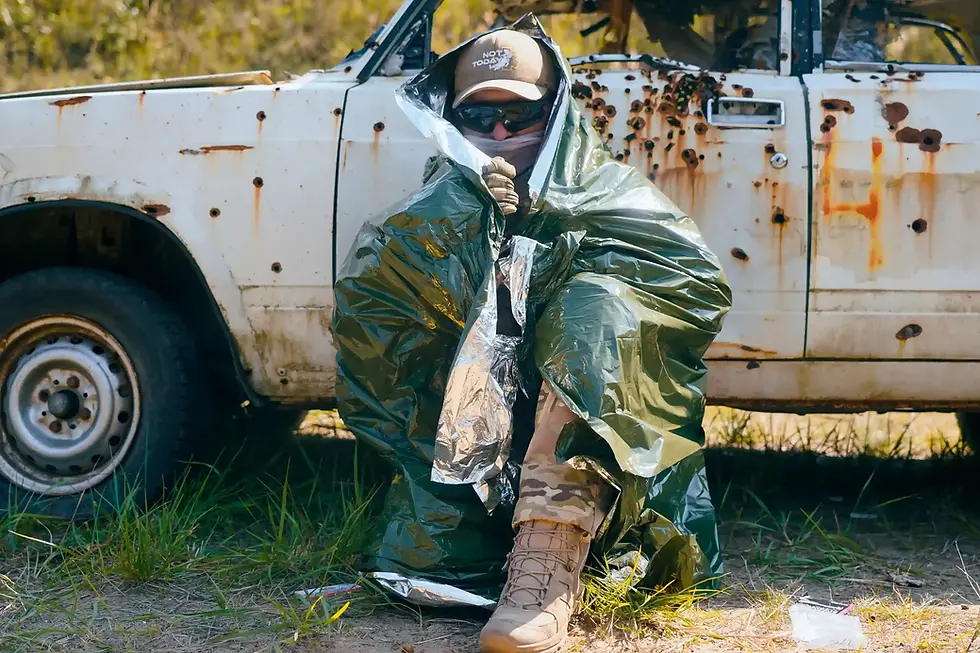
When caught in a survival situation, body heat can escape rapidly, putting one at risk of hypothermia within hours. Many outdoor enthusiasts don't understand how such a thin sheet can literally save lives.
Emergency blankets work by reflecting up to 90% of the body's radiant heat back rather than allowing it to escape. The non-breathable metallized plastic film prevents convective heat loss by blocking wind and creates a barrier that traps the warmth the human body naturally produces.
Understanding how emergency blankets actually work—and their limitations—will help users employ them effectively when it matters most. Let's break down the science behind these life-saving devices.
How Does the Human Body Naturally Lose Heat?
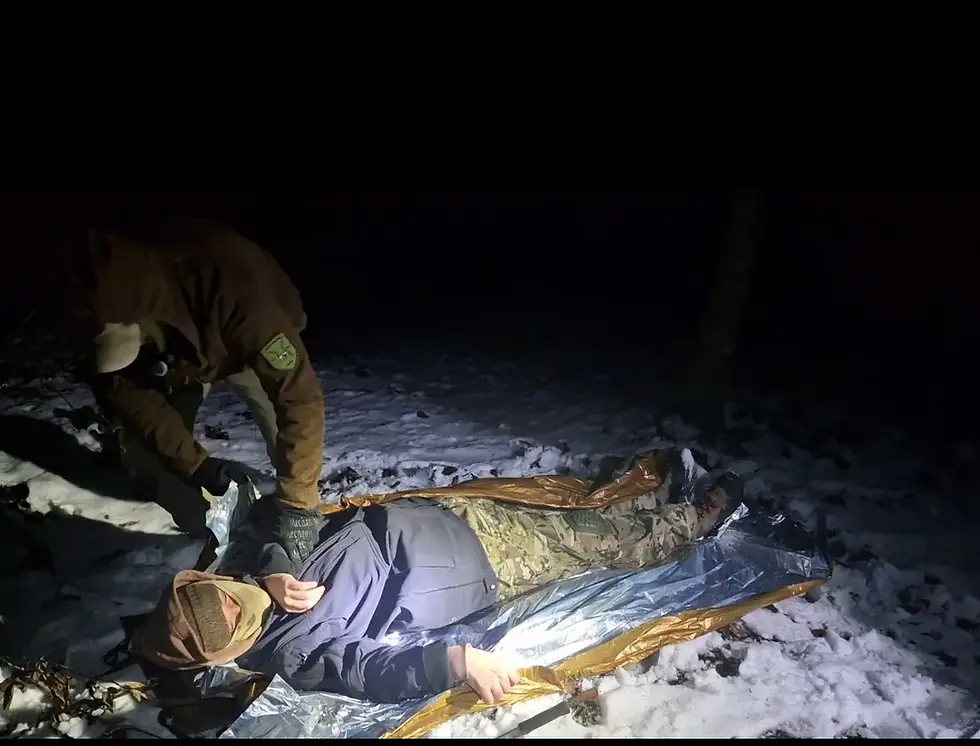
To understand how emergency blankets work, we must first understand how the body loses heat. The human body continuously loses heat through three main mechanisms:
Radiation: Heat waves emitting from skin (accounts for ~65% of heat loss)
Convection: Wind carrying away heat from the body (~10-15%)
Conduction: Direct heat transfer to colder objects (~10-15%)
In survival situations, these processes determine how quickly hypothermia can develop. Human bodies are remarkable heat generators, constantly producing warmth through metabolic processes. However, this same feature creates a challenge in cold environments where heat retention is necessary.
Heat Loss Mechanism | Percentage of Total Heat Loss | How Emergency Blankets Address It |
Radiation | ~65% | Highly effective - reflects radiant heat back to body |
Convection | ~10-15% | Moderately effective - blocks wind but seams can allow air movement |
Conduction | ~10-15% | Not effective alone - requires additional ground insulation |
Understanding these heat transfer mechanisms helps explain why emergency blankets work so effectively for some aspects of cold weather protection but need supplementation for complete thermal management in survival situations.
The Science Behind How Emergency Blankets Work
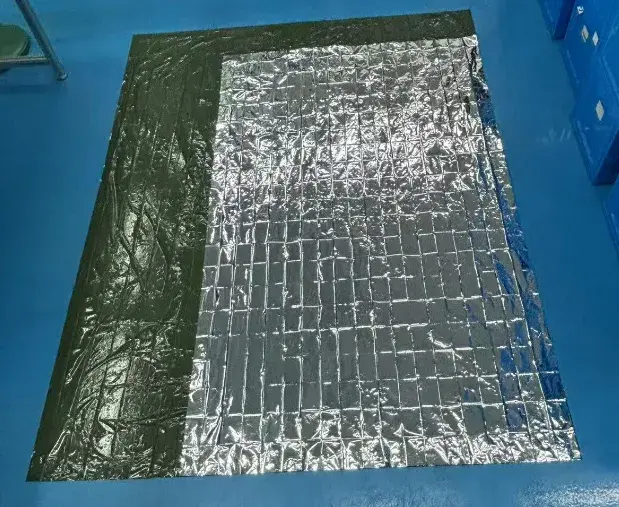
Emergency blankets are engineered with a thin layer of metallized plastic film that reflects infrared radiation. This technology originated from NASA space applications—hence the name "space blankets."
The Engineering Behind Emergency Blanket Technology
Emergency blankets utilize several key physical properties to maximize their warming efficiency:
Material Composition and Design Features
Modern emergency blankets typically feature:
Substrate Layer: A thin but durable polymer base providing structural integrity
Metallized Coating: Usually aluminum vapor deposited at microscopic thickness (typically 1000 angstroms or about 0.0001mm)
Surface Treatment: Some advanced blankets include micro-texturing that enhances durability
This construction creates a material that weighs typically just 1-2 ounces (28-56 grams) yet offers remarkable thermal properties. The reflective principle works much like the silvered glass in a thermos bottle, creating a radiant barrier that directs energy back toward its source.
How the Reflection Process Works
When the body emits infrared radiation (heat), the emergency blanket's metallized surface bounces this radiation back toward the body instead of allowing it to dissipate into the environment. This creates a feedback loop where:
Body produces heat through metabolism (~100 watts for an average resting adult)
Heat radiates from skin in form of infrared energy
Metallized surface of blanket reflects this energy back to the body
Reflected heat is reabsorbed by the body
Process continues, maintaining higher temperatures within the blanket cocoon
Temperature measurements show a differential of up to 15°F (8°C) between the microenvironment created by a properly applied emergency blanket and the ambient conditions—significant enough to prevent hypothermia in many scenarios.
How Emergency Blankets Address Different Types of Heat Loss

Understanding how emergency blankets work with each type of heat loss explains their effectiveness:
Radiation Protection (Primary Benefit)
Emergency blankets excel at addressing radiative heat loss, which constitutes approximately 65% of the body's total heat loss. The reflective surface returns this radiant energy back to the source, creating an efficient passive warming system requiring no power source or fuel.
Convection Barrier (Secondary Benefit)
The non-porous material also blocks air movement across the skin's surface, preventing the wind-chill effect. This addresses convective heat loss by:
Creating a still air boundary layer around the body
Blocking wind penetration
Reducing the temperature gradient between skin and surrounding air
Conduction Limitations
Emergency blankets have minimal insulating value against conductive heat loss. The thin material cannot prevent direct heat transfer to cold surfaces through contact. This explains why additional insulation between the body and ground remains essential even when using an emergency blanket.
How to Use Emergency Blankets Effectively Based on How They Work
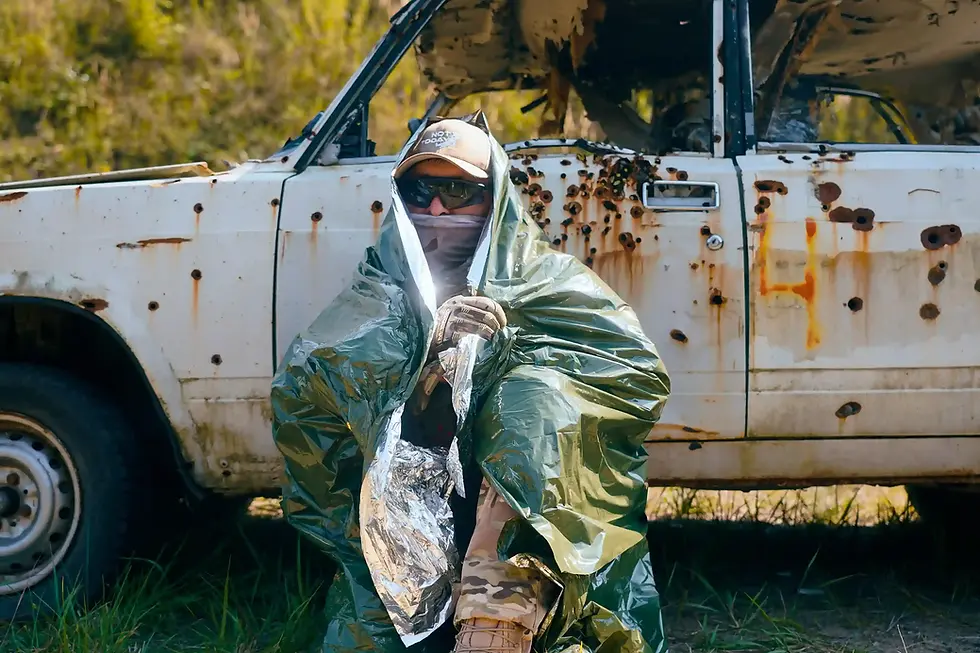
Understanding how emergency blankets function allows for optimal deployment:
Correct Orientation Matters
For maximum effectiveness, the shiny side should face inward toward the body to reflect heat. This counterintuitive approach optimizes the blanket's reflective properties.
Creating a Heat Trap
To maximize how emergency blankets work:
Ensure the blanket completely encircles the body
Create seals where possible to minimize air exchange
Form a smaller enclosed air space to heat more efficiently
Position the body in a compact form to reduce surface area for heat loss
Advanced Usage Techniques Based on Working Principles
The Cocoon Method: Maximizes the reflective capability by creating a fully enclosed space around the body with minimal openings.
The Dual Purpose Setup: Uses multiple blankets to address different heat loss mechanisms simultaneously—one for radiation (as wrap) and one for conduction (as ground barrier).
The Emergency Shelter Configuration: Creates a reflective environment on multiple surfaces to maximize heat retention within a confined space.
Limitations in How Emergency Blankets Work
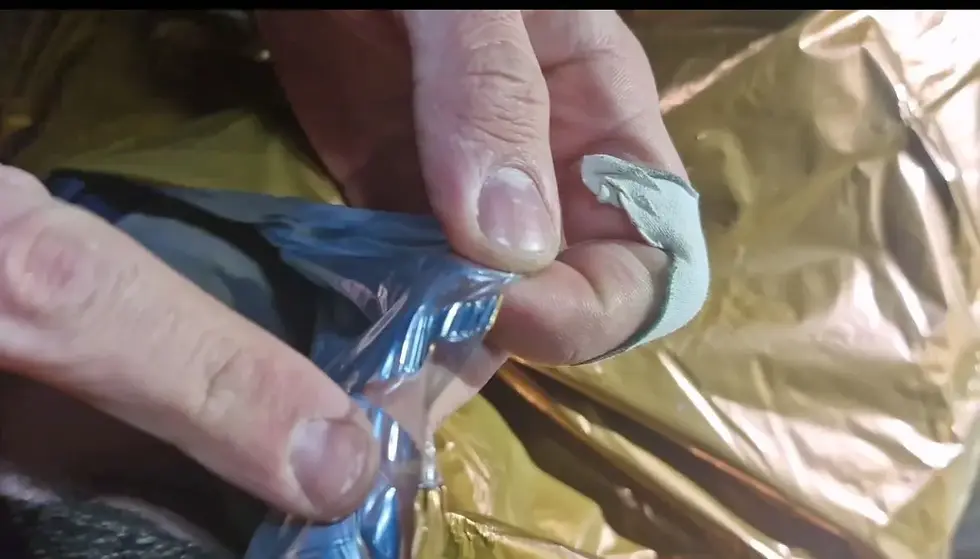
Understanding the working principles also reveals important limitations:
No Insulative Properties: Emergency blankets have almost no R-value and cannot create a warm layer between the user and cold surfaces.
Condensation Issues: Because of how they work to trap heat, the non-breathable nature causes moisture buildup from perspiration and respiration.
Require Body Heat Source: Emergency blankets reflect existing heat but generate none—they require a functioning body producing heat to be effective.
Conclusion
Emergency blankets work primarily by reflecting the body's radiant heat (up to 90%) and secondarily by blocking wind-chill, not by generating warmth themselves. Understanding these reflective principles—along with limitations regarding conductive heat loss—allows for effective use in survival situations.
For tactical operators and outdoor enthusiasts seeking reliable emergency blankets that maximize these reflective principles, YEYETAC™ offers military-grade emergency blankets with enhanced reflectivity, durability, and technical features. Contact support@tacticalmedicalkit.com for information on bulk orders of professional-grade emergency blankets designed based on advanced thermal reflection technology.
Frequently Asked Questions (FAQs)
Do emergency blankets actually generate heat?
No—emergency blankets work by reflecting your existing body heat rather than generating new heat. They create an efficient feedback loop of thermal radiation.
Which side of the emergency blanket should face the body?
The shiny metallic side should face toward the body to reflect radiant heat back, contrary to what many people assume.
How long do emergency blankets take to work?
Emergency blankets begin working immediately upon proper application, with noticeable warming effects within 5-10 minutes as reflected body heat accumulates in the enclosed space.
Can emergency blankets work for someone already hypothermic?
They have limited effectiveness for severely hypothermic individuals who produce little body heat. In these cases, external heat sources must be used alongside the blanket.
Can emergency blankets work in wet conditions?
Yes, but with reduced efficiency. The reflective principle still functions when wet, but heat loss through evaporation and conduction to wet materials increases significantly.




Comments